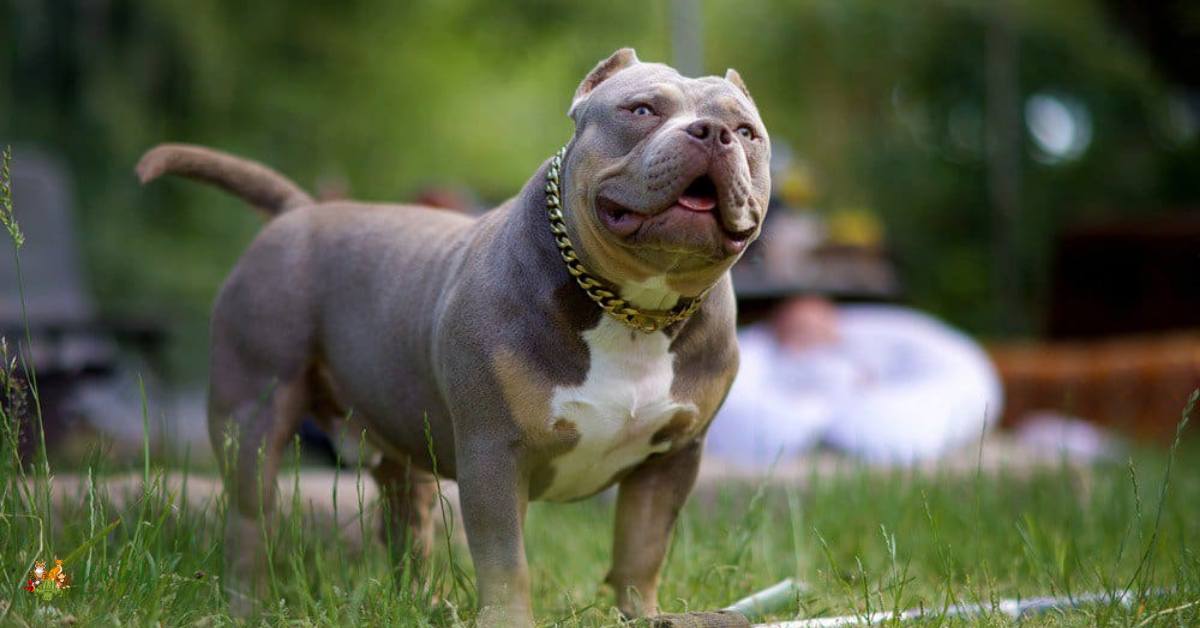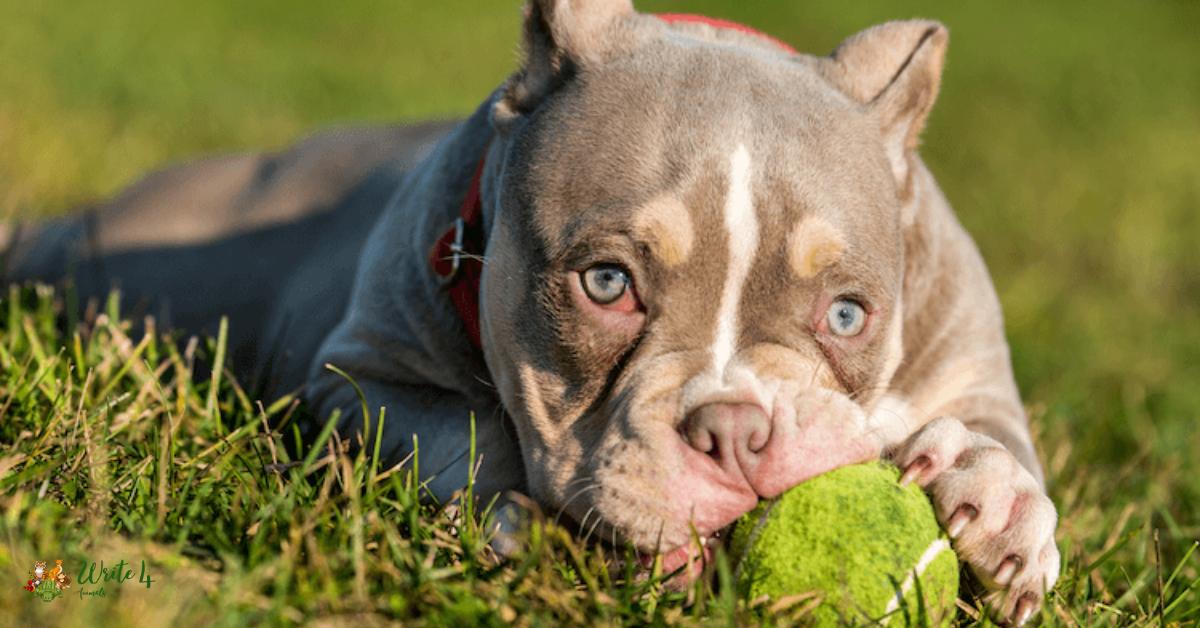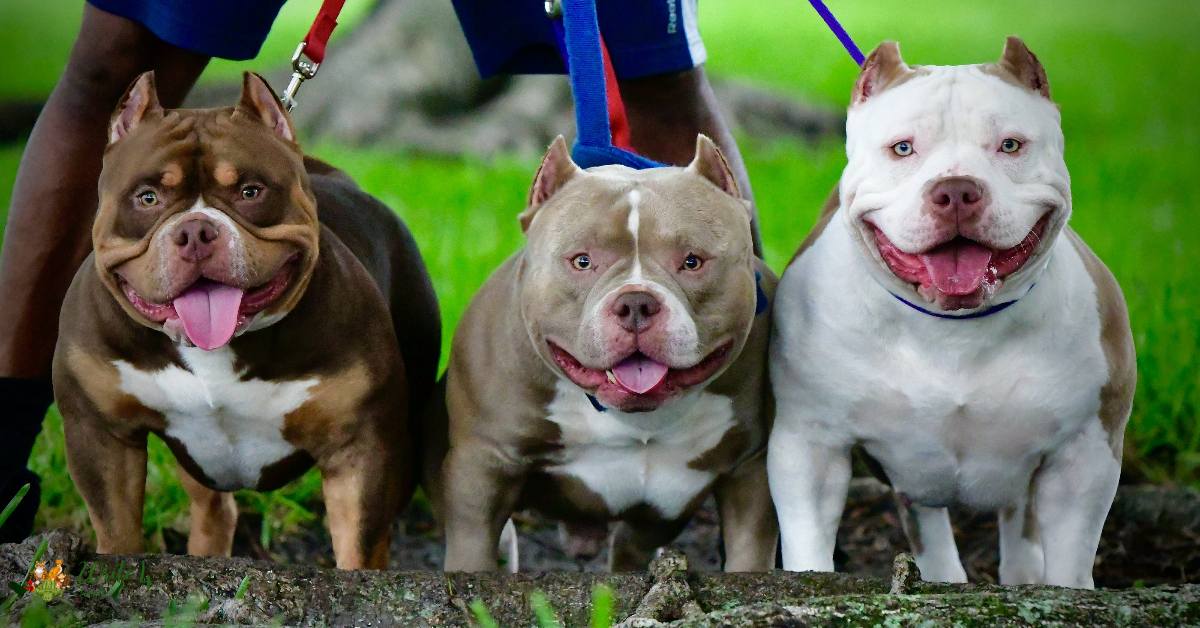In the realm of canine companionship, the Pocket Bully has emerged as a unique and fascinating breed, captivating the hearts of dog enthusiasts worldwide. Characterized by their compact size, muscular build, and friendly demeanor, these pint-sized powerhouses have become increasingly popular in recent years.
In this comprehensive guide, we will delve into the world of Pocket Bullies, exploring their history, characteristics, care requirements, and will also share Pocket Bully price.
About Pocket Bully Dog
History of Pocket Bully
The history of the Pocket Bully can be traced back to the late 20th century, rooted in the breeding practices of American Pit Bull Terriers and American Staffordshire Terriers. Breeders aimed to develop a more compact yet muscular canine companion without compromising on the breed’s distinctive traits.
Through meticulous selective breeding, the Pocket Bully dog emerged as a distinct breed, garnering recognition for its unique combination of strength, agility, and a friendly disposition.
The breed’s journey reflects the dedication of enthusiasts who sought to create a smaller, more manageable version of the traditional American Pit Bull Terrier, resulting in the development of the Pocket Bully as a beloved and sought-after companion.
Appearance of Pocket Bully
The Pocket Bully boasts a striking appearance characterized by a compact and muscular build. Despite their smaller size compared to their ancestors, these dogs exhibit a powerful physique with a broad chest, well-defined muscles, and a sturdy frame.
Their head is proportionate to their body, featuring a well-defined muzzle and expressive eyes. The breed’s ears may be cropped or left natural, adding to their distinctive look. Pocket Bullies come in various coat colors and patterns, contributing to their overall eye-catching and appealing aesthetic.
Pocket Bully Temperament and Activities
Known for their friendly and sociable nature, Pocket Bullies make excellent family pets. They are affectionate, loyal, and often display a gentle demeanor towards children, making them suitable for households of all sizes.
These dogs thrive on human interaction and form strong bonds with their owners. Despite their muscular appearance, Pocket Bullies are not aggressive by nature. They are known to be intelligent and eager to please, making training a rewarding experience.
Engaging in activities like daily walks, playtime, and mental stimulation is essential to keep them happy and healthy. Incorporating activities that tap into their natural intelligence, such as puzzle toys or obedience training, can provide both mental and physical stimulation for these charming companions.
Pocket Bully Personality and Behavior
Affectionate and Loyal: Pocket Bullies are renowned for their affectionate nature and deep loyalty to their owners. They form strong bonds with family members and are often considered loving companions.

Playful Demeanor: Despite their muscular build, Pocket Bullies have a playful and energetic demeanor. They enjoy interactive play and thrive in environments where they can engage in physical activities.
Intelligence and Trainability: These dogs exhibit a high level of intelligence, making them relatively easy to train. They respond well to positive reinforcement and thrive on mental stimulation, excelling in obedience training and various canine sports.
Social Nature: Pocket Bullies are generally social dogs and enjoy the company of both humans and other pets. Proper socialization from an early age helps ensure they develop into well-mannered and well-adjusted companions.
Protective Instincts: While not aggressive, Pocket Bullies may display protective instincts towards their family. This makes them reliable guard dogs, alerting their owners to any potential threats.
Pocket Bully Price
The cost of a Pocket Bully can vary significantly based on several factors. Generally, prices range from $1,000 to $4,000 or even higher, depending on factors such as pedigree, lineage, and breeder reputation.
Various Factors that Affect the Price of Pocket Bully
Pedigree and Bloodline: Pocket Bullies with exceptional pedigrees and bloodlines from reputable breeders often command higher prices. A well-documented lineage with champion ancestry can significantly influence the cost.
Color and Coat Pattern: The coat color and pattern of a Pocket Bully dog can impact its price. Rare or unique colorations may be more sought after and, therefore, more expensive.
Breeder Reputation: Reputable breeders with a history of producing healthy, well-tempered dogs often charge higher prices. The assurance of responsible breeding practices and a healthy bloodline contributes to the overall cost.
Conformation to Breed Standards: Pocket Bullies that closely conform to established breed standards, including size, structure, and temperament, may be priced higher. Conformation to standards indicates the breeder’s commitment to preserving the breed’s characteristics.
Health Guarantee and Vet Care: Breeders offering health guarantees, vaccinations, and thorough veterinary care for their Pocket Bullies may charge more. Buyers often find value in knowing they are getting a healthy and well-cared-for dog, which can justify a higher price point.
Pocket Bully Health Issues
Hip Dysplasia: Like many medium to large dog breeds, Pocket Bullies may be prone to hip dysplasia, a genetic condition where the hip joint doesn’t fit into the hip socket properly, leading to arthritis over time.
Skin Allergies: Some Pocket Bullies may be susceptible to skin allergies, which could result from environmental factors, food sensitivities, or genetic predisposition. Regular grooming and a proper diet can help manage these issues.
Heart Conditions: Certain cardiac issues may affect Pocket Bullies, emphasizing the importance of regular veterinary check-ups to monitor heart health.
Eye Problems: Pocket Bullies may be prone to certain eye conditions, such as cataracts or cherry eye. Regular eye examinations can help detect and address these issues early.
Joint Problems: Issues like patellar luxation, where the kneecap dislocates, can occur in Pocket Bullies. Maintaining a healthy weight and providing joint supplements may help prevent such problems.
Pocket Bully Overall Maintenance Cost
Nutritional Needs: High-quality dog food tailored to their specific needs is essential for Pocket Bullies. This may include premium kibble, supplements, and occasional treats.
Routine Veterinary Care: Regular veterinary check-ups, vaccinations, and preventive treatments for parasites contribute to the overall health of a Pocket Bully.
Grooming Expenses: Pocket Bullies require regular grooming, including brushing, nail trimming, and ear cleaning. Occasional professional grooming may also be necessary.
Training and Behavioral Classes: Investing in training classes, especially during the Pocket Bully puppy stage, is crucial for a well-behaved Pocket Bully. This can incur additional costs but is essential for their development.
Emergency Medical Expenses: Having a financial cushion for unexpected veterinary emergencies is advisable. This can include surgeries, treatments, or medications that may arise throughout the dog’s life.
Pocket Bully Care Tips
Grooming
Regular Brushing: Due to their short coat, Pocket Bullies require regular brushing to minimize shedding and keep their coat healthy. Use a soft-bristle brush to remove loose hair and distribute natural oils.
Bath Time: Bathe your Pocket Bully dog as needed, typically every 6-8 weeks or when they get dirty. Use a mild dog shampoo to avoid skin irritation and dryness. Be sure to thoroughly dry their coat after bathing.
Nail Care: Regularly trim your Pocket Bully’s nails to prevent overgrowth, discomfort, and potential injuries. If you’re unsure about nail trimming, consult a professional groomer or your veterinarian for guidance.
Ear Cleaning: Check and clean their ears regularly to prevent infections. Use a damp cloth or a veterinarian-recommended ear cleaning solution, and avoid inserting anything into the ear canal.
Dental Hygiene: Brush your Pocket Bully’s teeth regularly to prevent dental issues. Dental chews or toys can also help maintain good oral health.
Training and Exercise
Positive Reinforcement: Pocket Bullies respond well to positive reinforcement. Use treats, praise, and toys to reward good behavior during training sessions.

Consistent Training: Establish a consistent training routine to reinforce commands and encourage good manners. Start training early to shape a well-behaved and obedient dog.
Socialization: Expose your Pocket Bully to various environments, people, and other animals from an early age to promote positive socialization. This helps prevent fear or aggression towards new experiences.
Exercise Routine: Provide daily exercise to keep your Pocket Bully physically and mentally stimulated. This can include walks, playtime, and interactive toys that challenge their intelligence.
Engage in Canine Sports: Pocket Bullies often enjoy canine sports like agility, obedience trials, or even weight pulling. These activities not only provide physical exercise but also mental stimulation.
Diet and Nutrition
High-Quality Dog Food: Choose a premium dog food formulated for medium-sized, active breeds. Ensure that the food meets their specific nutritional needs and supports their overall health.
Portion Control: Be mindful of portion sizes to prevent obesity. Adjust the feeding amounts based on your Pocket Bully’s age, weight, and activity level.
Regular Feeding Schedule: Establish a consistent feeding schedule to regulate your dog’s digestion and prevent overeating. Avoid feeding human food, especially items that may be toxic to dogs.
Fresh Water: Always provide access to fresh, clean water. Hydration is crucial for their overall well-being.
Consult with a Veterinarian: Regularly consult with your veterinarian to ensure your Pocket Bully’s dietary needs are met. They can provide guidance on specific nutritional requirements and address any concerns about your dog’s health.
Socialization
Early Exposure: Start socialization at a young age, exposing your Pocket Bully to various people, environments, and other animals. This helps prevent fear or aggression towards unfamiliar situations.
Positive Interactions: Encourage positive interactions with people and animals. Use treats and praise to reward calm and friendly behavior.
Ongoing Socialization: Socialization is an ongoing process. Continue exposing your Pocket Bully to new experiences throughout their life to maintain their confidence and adaptability.
Training Classes: Enroll your Pocket Bully dog in obedience and socialization classes. These classes provide structured environments for positive interactions with other dogs and people.
Supervised Playdates: Organize supervised playdates with other well-behaved dogs to enhance social skills. Monitor interactions to ensure a positive and safe experience for all dogs involved.
Pocket Bully Lifespan
The average lifespan of a Pocket Bully typically ranges between 10 to 13 years, depending on factors such as genetics, overall health, and the quality of care provided. Proper nutrition, regular veterinary check-ups, and a healthy lifestyle contribute to a longer and happier life for these dogs.
Facts About Pocket Bully
1. Pocket Bullies are a compact and muscular breed, originating from the selective breeding of American Pit Bull Terriers and American Staffordshire Terriers.
2. Despite their smaller size, they possess a robust build, showcasing strength and agility.
3. These dogs have a distinctive appearance with a broad chest, well-defined muscles, and a proportional head.
4. Pocket Bullies are known for their friendly and affectionate nature, making them excellent family pets.
5. They are intelligent and easily trainable, responding well to positive reinforcement during obedience training.
6. Regular grooming, including brushing and occasional baths, is essential for maintaining their short coat.
7. Pocket Bullies may be prone to health issues like hip dysplasia, skin allergies, and eye problems.
8. A well-balanced diet with high-quality dog food is crucial to support their overall health and well-being.
9. Socialization is key, and early exposure to various environments and people helps prevent behavioral issues.
10. These dogs thrive on regular exercise and enjoy engaging in activities such as playtime, walks, and canine sports.
Frequently Asked Questions
[sc_fs_multi_faq headline-0=”h4″ question-0=”What is a Pocket Bully?” answer-0=”A Pocket Bully is a compact and muscular breed developed through selective breeding of American Pit Bull Terriers and American Staffordshire Terriers. They are known for their smaller size compared to standard pit bull breeds.” image-0=”” headline-1=”h4″ question-1=”How is a Pocket Bully different from other small dog breeds?” answer-1=”Unlike other small dog breeds, Pocket Bullies have a muscular build and distinctive appearance, resembling smaller versions of American Pit Bull Terriers. They are characterized by their friendly temperament and unique coat patterns.” image-1=”” headline-2=”h4″ question-2=”What is the average size and weight of a Pocket Bully?” answer-2=”Pocket Bullies typically weigh between 35 to 60 pounds and stand around 13 to 17 inches tall at the shoulder. Their size makes them more manageable than standard pit bull breeds.” image-2=”” headline-3=”h4″ question-3=”Are Pocket Bullies good with children and other pets?” answer-3=”Yes, Pocket Bullies are generally known for their friendly and sociable nature. They can make excellent family pets and often get along well with children and other animals when properly socialized.” image-3=”” headline-4=”h4″ question-4=”How much exercise does a Pocket Bully need?” answer-4=”Pocket Bullies benefit from regular exercise to maintain their muscle tone and overall health. Daily walks, playtime, and mental stimulation activities are essential to meet their exercise requirements.” image-4=”” headline-5=”h4″ question-5=”Are Pocket Bullies aggressive?” answer-5=”No, Pocket Bullies are not inherently aggressive. Their temperament is influenced by genetics, socialization, and training. With proper care, socialization, and positive reinforcement training, they can be gentle and well-behaved companions.” image-5=”” headline-6=”h4″ question-6=”What are common health issues in Pocket Bullies?” answer-6=”Pocket Bullies may be prone to health issues such as hip dysplasia, skin allergies, heart conditions, eye problems, and joint problems. Regular veterinary check-ups are crucial to monitor and address potential health concerns.” image-6=”” headline-7=”h4″ question-7=”How should I groom my Pocket Bully?” answer-7=”Regular grooming for Pocket Bullies includes brushing to minimize shedding, occasional baths using a mild dog shampoo, nail trimming, ear cleaning, and dental care. Maintaining good grooming practices contributes to their overall health and well-being.” image-7=”” headline-8=”h4″ question-8=”Can Pocket Bullies adapt to apartment living?” answer-8=”Yes, Pocket Bullies can adapt well to apartment living if their exercise and socialization needs are met. Regular walks and playtime are essential to keep them physically and mentally stimulated.” image-8=”” headline-9=”h4″ question-9=”Where can I find a reputable Pocket Bully breeder?” answer-9=”To find a reputable breeder, research and choose one with a good reputation, positive reviews, and a commitment to the health and well-being of their dogs. Ask for references, visit the breeder’s facility, and ensure they follow ethical breeding practices. Additionally, consider adopting from rescue organizations or shelters.” image-9=”” html=”true” css_class=””]
Recommended
1. Why is basa fish banned ? | basa fish
2. Exotic Bully Price 2023 | micro exotic bully
